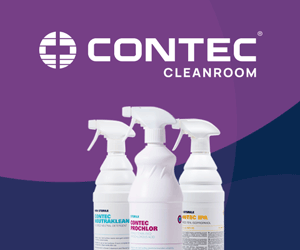Hanovia, a world leader in UV disinfection for applications as diverse as food and beverage processing, pharmaceutical manufacturing, brewing, electronics and fish farms, is celebrating 90 years in business.
From the early days when it made UV lamps for treating skin conditions to today’s high-tech UV water treatment systems, Hanovia, based in Slough, Berkshire, has always been at the forefront of UV science and the company says age is no barrier to innovation.
The company hosted a birthday celebration at its headquarters on 3 November, which was attended by the Mayor of Slough, Shafiq Chaudhry, the Leader of Slough Borough Council, Rob Anderson, representatives from SEGRO (which runs Slough Trading Estate), journalists and former Hanovia employees.
After a brief talk by John Ryan, Hanovia’s Managing Director, about Hanovia’s long history – and looking ahead to the next 10 years – visitors had a short factory tour, followed by a cake-cutting ceremony and lunch.
Sir William Herschel first discovered ‘invisible radiation’ (infra-red rays) in Slough in 1880 and this led to Johann Wilhelm Ritter’s discovery of ultraviolet radiation in Germany a year later.
Hanovia’s history goes back to the early 1920s, when it started manufacturing UV lamps for medical treatment. ‘Actinotherapy’ or ‘artificial sunlight’ gained popularity after it was found that it cured rickets and helped in the healing of wounds. From then on, no hospital could afford to be without UV equipment. Hanovia was also one of the innovators of air disinfection using UV.
From those early days, Hanovia has evolved into one of the world’s leading manufacturers of UV lamps and systems for water disinfection in the industrial, leisure, building, aquaculture and shipping industries.Hanovia’s timeline
- 1924 The British Hanovia Quartz Lamp Co Ltd is founded in Slough, holding various patents and manufacturing rights across the British Empire
- 1925 The company starts manufacturing UV lamps for medical and other applications
- 1927 Hanovia extends its operations overseas, appointing distributors in Australia, India and New Zealand
- 1928 UV ‘artificial sunlight’ receives significant press coverage and front page news due to the work Hanovia was doing for medical applications
- 1931 Hanovia starts publishing The Quartz Lamp, a quarterly journal reproducing the best articles in the field of actinotherapy
- 1934 The company acquires land in Slough and begins building its own office and factory premises, which are opened in 1935
- 1935 The company is renamed Hanovia Limited
- 1936–1939 These years see the development of an entire new range of therapeutic lamps and a series of laboratory models based on a new UV ‘arc tube’
- 1939 The company introduces ‘low pressure’ mercury discharge tubes for bactericidal irradiation
- 1939–1945 Hanovia manages to retain its unique team of specialists and continues operation as an ‘Essential Establishment’
- 1942 The company designs ‘high pressure’ UV arc tubes for use in high speed photo printing
- 1949 By now, food, beverage and pharmaceutical manufacturers across Europe are using Hanovia’s UV technology for bacterial disinfection
- 1950 The ‘Biscayne’ domestic sunlamp is launched
- 1955 The company introduces a portable fluorescent UV lamp for actinotherapy
- 1960 A domestic room heater is launched
- 1981 Hanovia is acquired by Halma plc, a FTSE 250 company with subsidiaries around the world, focusing on hazard detection, life protection, personal and public health improvement and environmental protection
- 1983 Aquionics begins operation as Hanovia’s North American sales, marketing and service arm




